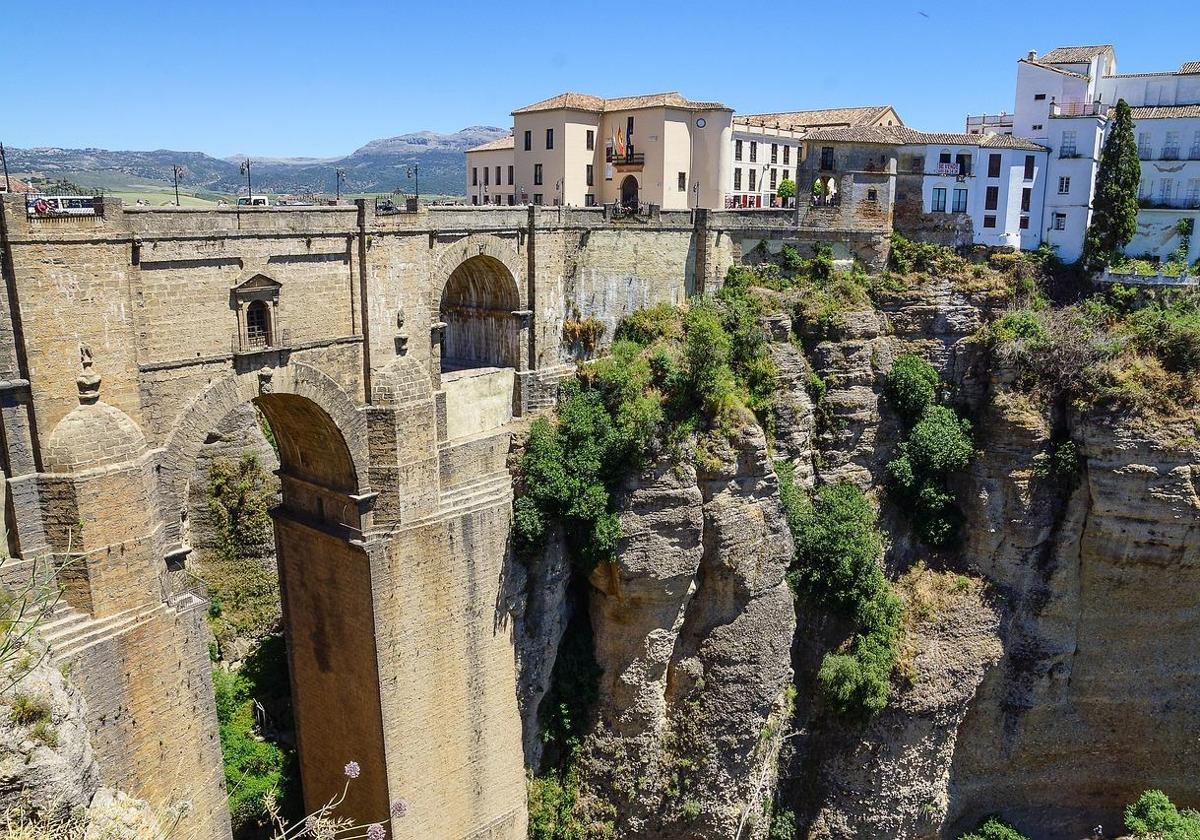When will strict new traffic restrictions come into effect on Ronda's historic Puente Nuevo bridge?
When it is fully implemented, only vehicles registered in the town will be allowed to circulate freely in the vicinity of this monument- and the trial period has already begun
Starting in August, Ronda's town centre will experience significant alterations to traffic. The town hall has announced that traffic will begin to be regulated along the road between Calle Virgen de la Paz, from the Alameda area, and Calle Armiñán, the road section that includes the iconic Puente Nuevo bridge. This road, one of the busiest in the municipality, carries a daily volume of traffic that the town hall considers excessive and detrimental to mobility, safety and preservation of Ronda's heritage.
The measure was officially presented by Ronda's mayor, Mari Paz Fernández, Jorge Fernández (the councillor responsible for traffic) and Miguel Aranda (the town's chief inspector of Local Police). As explained, the restriction will affect vehicles not registered for road tax in Ronda. This means that only residents who pay this tax in the municipality will be able to drive on this stretch of road. The aim is to reduce the daily traffic in this area by approximately 30%.
-u87502786448fhz-1200x840%40diario%20sur.jpg)
This traffic reduction not only aims to improve traffic flow and safety for drivers and pedestrians, but also contribute to the protection of Ronda's historic centre. The Puente Nuevo, one of the town's architectural icons, will particularly benefit from this measure as it seeks to reduce the structural pressure caused by the constant passage of vehicles over the bridge's famous arches that span the Tajo gorge.
Trial period
The trial period has already begun and will run until 1 August. During these weeks the local council has begun installing information signs and surveillance cameras that will allow the Local Police to monitor compliance with the new regulations. Restricted access will be clearly signposted, and the camera-based monitoring system will facilitate automatic identification of license plates.
Alongside this new regulation, other important changes will be implemented for local traffic. The traffic flow on Calle Molino will be reversed, as well as the section between Calle Pozo and Calle Molino. Access to the central Cuartel de la Concepción car park will also be modified and new traffic lights will be installed at the intersection between Avenida de la Victoria and Calle Sevilla. These adjustments are intended to adapt the road network to the new mobility scheme with the least possible impact on drivers.
The mayor noted that this action is included in Ronda's PMUS plan for sustainable, urban mobility, a consensus-based document that includes a series of measures aimed at improving mobility, reducing pollution and promoting a more accessible and environmentally friendly city model. Fernández stressed that Ronda's historic centre must be compatible with an orderly and sustainable traffic flow and that this measure is part of a strategic approach to protecting it.


Comentar es una ventaja exclusiva para registrados
¿Ya eres registrado?
Inicia sesiónNecesitas ser suscriptor para poder responder.
Necesitas ser suscriptor para poder votar.